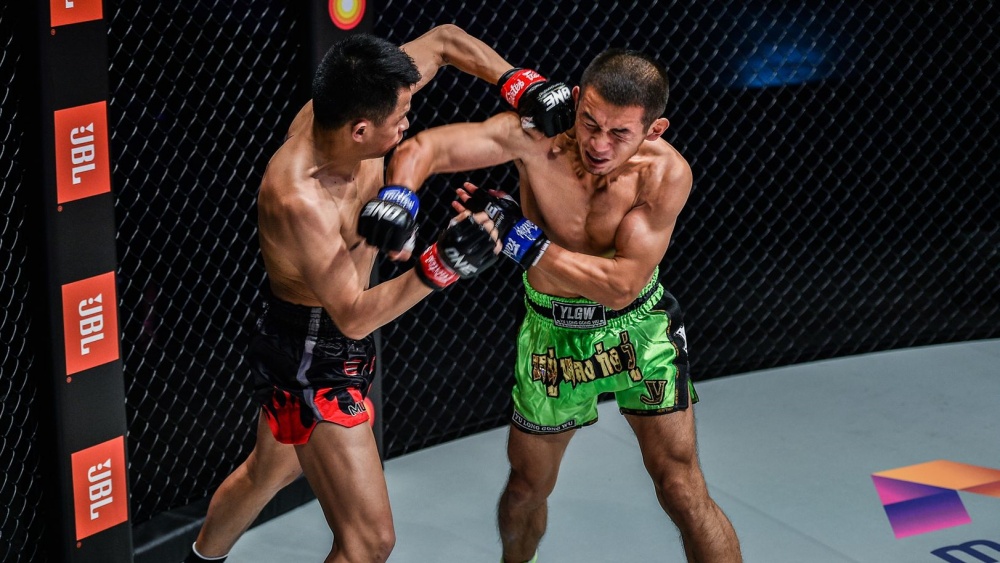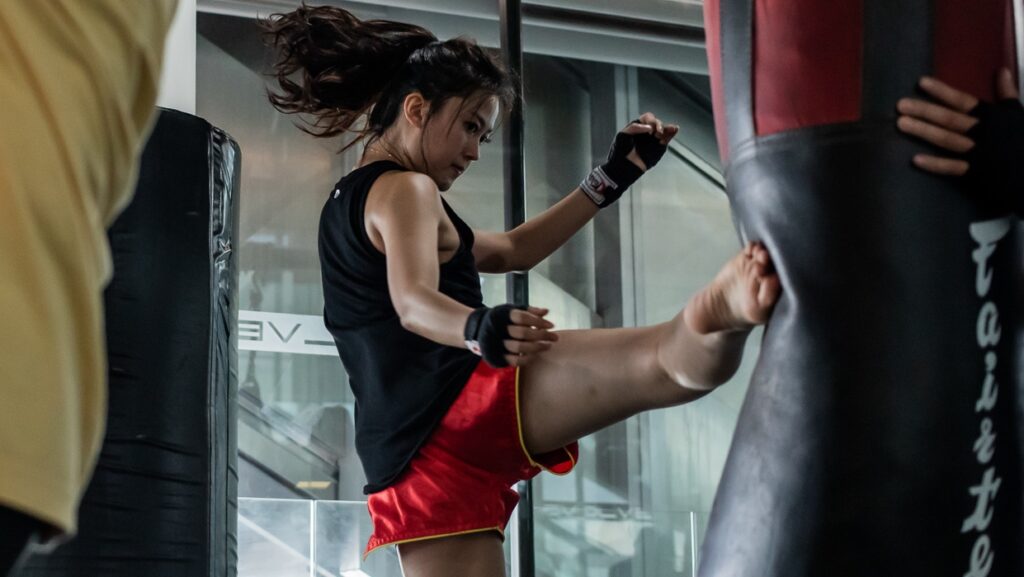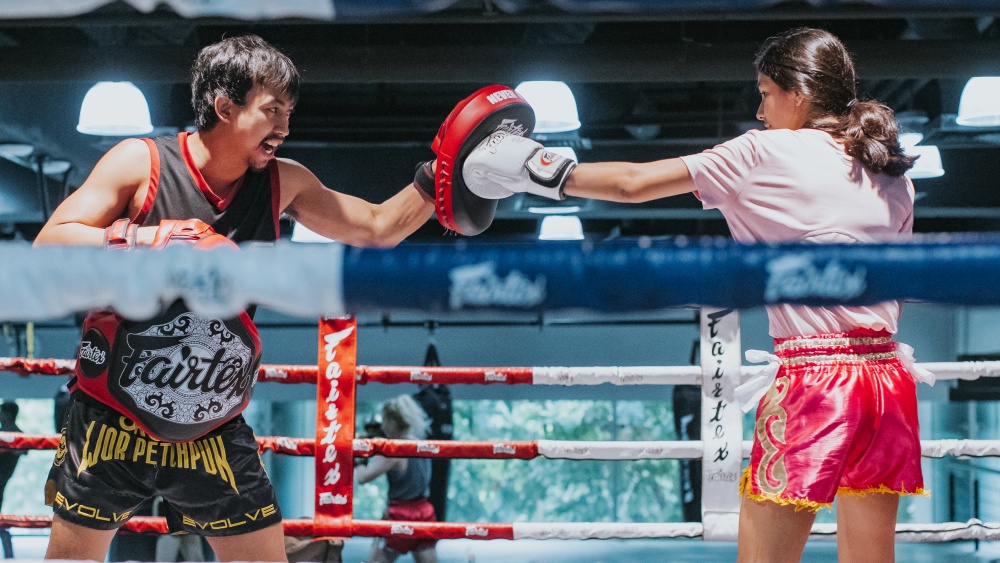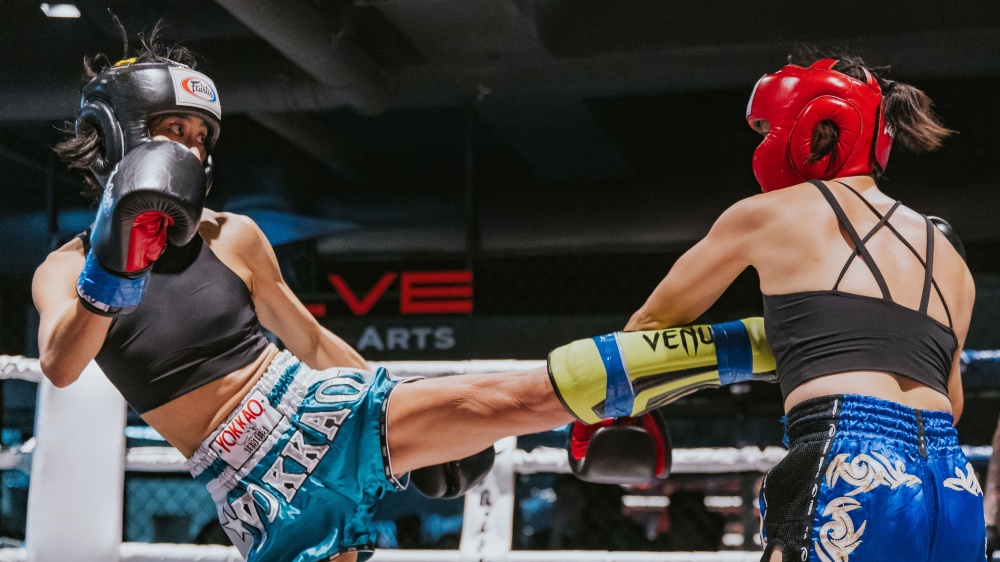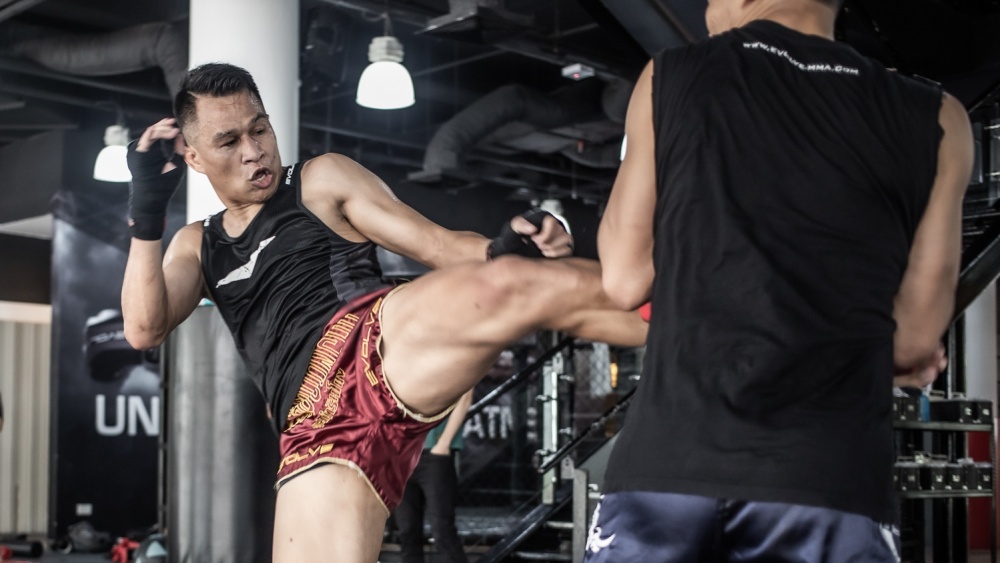Footwork is a fundamental aspect of Muay Thai that often separates the average fighters from the exceptional ones. In the world of this ancient martial art, where precision and strategy reign supreme, mastering the art of ring control becomes paramount.
And one of the most effective ways to achieve ring control is by utilising angles and lateral movement in your footwork. In this article, we will delve into the concept of strategic footwork and explore how angles and lateral movement can be harnessed to gain an edge in controlling the ring in Muay Thai.
By understanding and implementing these techniques, you’ll be able to create openings, neutralise attacks, and ultimately dictate the pace and flow of the fight. So, tighten your laces, step into the ring, and let’s explore the world of strategic footwork in Muay Thai.
Understanding Ring Control In Muay Thai
Ring control is more than just navigating the squared canvas; it’s about asserting dominance and dictating the flow of the fight. In Muay Thai, the ability to cut off the ring is a crucial skill that can give you a significant advantage over your opponent.
By strategically positioning yourself and limiting their movement options, you can effectively control the ring. Footwork plays a pivotal role in achieving this control, allowing you to maintain the optimal distance and angle for your attacks while simultaneously limiting your opponent’s options.
Angles: Creating Openings And Neutralising Attacks
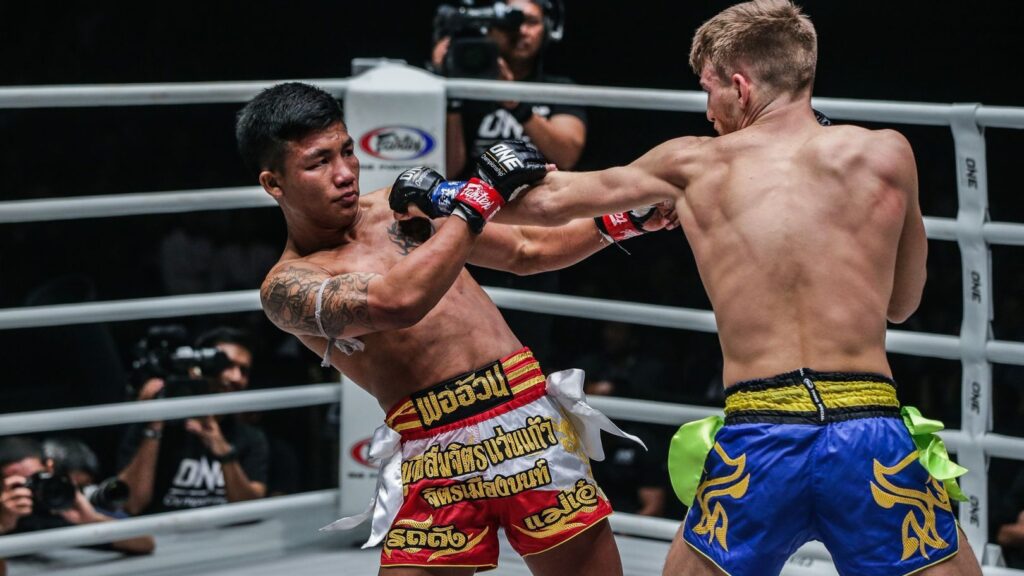
Angles are a fundamental concept in Muay Thai footwork. By moving off the centreline and attacking from different angles, you can create openings in your opponent’s defence while making it harder for them to counter.
Angles not only provide you with a tactical advantage but also allow you to evade strikes more effectively. Check out these specific angle techniques such as pivoting, stepping off at 45-degree angles, and circling to flank the opponent.
By understanding and implementing these techniques, you can launch effective attacks and neutralise your opponent’s offence.
- Pivoting: Rotating your lead foot or rear foot to change your angle of attack or defence.
- Stepping Off At 45-Degree Angles: Moving diagonally to create an angle that allows you to attack from the side or evade your opponent’s strikes.
- Circling To Flank The Opponent: Moving in a circular motion around your opponent to gain a more advantageous position and attack from their blind spot.
- Lateral Shifting: Sidestepping to create angles for counterattacks or to evade incoming strikes.
- Slipping And Angling: Combining head movement with footwork to slip punches while simultaneously creating an angle for effective counterattacks.
- V-Stepping: Stepping forward with one foot and then laterally with the other to quickly change angles and disrupt your opponent’s rhythm.
- Cutting Off The Corners: Anticipating your opponent’s movement and strategically positioning yourself to cut off their escape routes by angling your footwork.
These techniques, when applied effectively, can help you create openings in your opponent’s defence, neutralise their attacks, and gain control over the ring.
Lateral Movement: Evading And Setting Traps
Lateral movement is another essential component of strategic footwork in Muay Thai. It involves moving laterally, sidestepping, or shifting weight from side to side. Lateral movement can be used to evade strikes, create distance, and set traps for your opponent.
By mastering lateral movement, you can effectively disrupt your opponent’s timing, frustrate their attacks, and set up devastating counterattacks. We will explore various lateral movement techniques, including shuffling, crab walking, and pivoting, and examine how they can be applied in different scenarios to gain a tactical advantage.
- Shuffling: Utilising small, quick steps to laterally move in any direction while maintaining balance and readiness to attack or defend.
- Crab Walking: Moving laterally with a wider stance, keeping your hips low and centred, allowing for quick changes in direction and enhanced stability.
- Pivoting: Rotating on the ball of your foot to change direction quickly and efficiently while maintaining balance and stability.
- Angle Stepping: Taking diagonal steps to the side, creating lateral movement while simultaneously angling towards or away from your opponent.
- Lateral Weight Shifting: Transferring your weight from one foot to the other in a sideways motion, allowing for quick evasive movements or setting up powerful strikes.
- Lateral Sliding: Sliding your lead foot or rear foot to the side, maintaining a low stance and enabling smooth lateral movement without losing balance or telegraphing your intentions.
- Lateral Circles: Moving in circular patterns laterally around your opponent, using footwork to maintain distance, and setting up counterattacks.
These lateral movement techniques will enable you to evade strikes, create angles for effective counterattacks, and set traps for your opponent. By incorporating these techniques into your footwork repertoire, you’ll enhance your defensive capabilities and increase your overall ring control in Muay Thai.
Integrating Angles And Lateral Movement For Ring Control
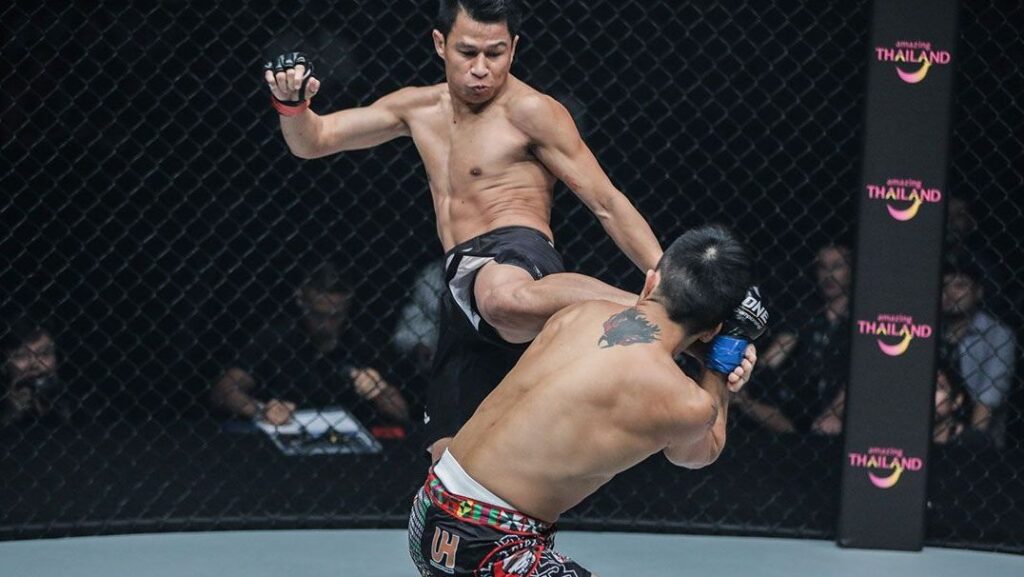
While angles and lateral movement are powerful on their own, their true potential is unlocked when combined strategically. By seamlessly transitioning between angles and utilising lateral movement to reposition yourself, you can maintain the upper hand, confuse your opponent, and create opportunities for powerful strikes. Timing and rhythm play a crucial role in executing these transitions.
Developing Footwork Skills For Ring Control
To effectively implement strategic footwork in Muay Thai, it is vital to develop strong footwork skills. In this section, we will provide practical tips and exercises to improve your footwork. Agility, speed, balance, and coordination are key components that can be honed through targeted drills and exercises.
Here are a few exercises that can enhance your footwork capabilities, allowing you to move with fluidity and precision in the ring.
- Focus On Footwork Fundamentals: Begin by mastering the basics of footwork, such as maintaining a proper stance, balance, and weight distribution.
- Practice Agility Drills: Incorporate agility ladder drills, cone drills, and ladder hops to improve your footwork speed, coordination, and overall agility.
- Shadowboxing With Footwork: Utilise shadowboxing sessions to specifically focus on footwork movements, incorporating angles, lateral movement, and transitions between different positions.
- Incorporate Shadow Sparring: Practice shadow sparring, visualising an opponent’s movements, and implementing footwork techniques to improve your ring control and defensive capabilities.
- Work On Mobility Exercises: Incorporate exercises that enhance your mobility, such as hip mobility drills, ankle mobility exercises, and dynamic stretching to improve your overall footwork range and flexibility.
- Develop Balance And Stability: Include exercises such as single-leg balance drills, wobble board exercises, and stability ball training to enhance your balance and stability, which are essential for maintaining control during footwork movements.
- Drill Specific Footwork Patterns: Designate specific footwork patterns and practice them repetitively, focusing on maintaining proper technique, speed, and precision.
- Spar With Footwork Focus: During sparring sessions, consciously incorporate footwork techniques and strategies, emphasising maintaining angles, utilising lateral movement, and cutting off the ring to control the flow of the fight.
- Seek Guidance From A Coach Or Trainer: Work closely with a knowledgeable coach or trainer who can provide feedback, correct any errors in your footwork, and provide personalised guidance to improve your skills.
By implementing these practical tips and consistently incorporating footwork-focused training into your routine, you can develop strong footwork skills and enhance your overall ring control in Muay Thai.
Applying Ring Control Techniques in Sparring
The challenge in an actual fight is to put footwork techniques to work. Utilising sparring sessions to hone your footwork is crucial.
Strategic footwork, utilising angles and lateral movement, is a vital aspect of mastering ring control in Muay Thai. By understanding the significance of ring control, incorporating angle techniques, leveraging lateral movement, and seamlessly integrating both elements, you can gain an advantage in the ring.
You may also like:
10 Tips And Drills To Improve Your Reflexes For Boxing And Muay Thai
